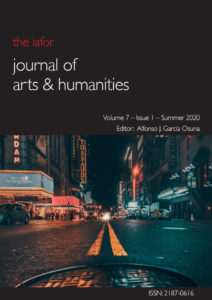Dear Readers,
We’ve arrived at a moment in history where humanist thought, or more exactly the humanist endeavour, must again migrate from bookish realms of detached abstraction to a place where it will act as arbiter and advocate in the substantive arena of everyday life and human interaction. Humanism must once more find ways to be critically relevant in the course of human events, much in the manner of XIV century Italians and of d’Alembert and Diderot in the XVIII century. Like them, humanists must again find a way to cross the bridge that unites intellective with substantial, helping find ways to change our lives and alter the terrifying direction that our species’ journey has taken.
Now, in the midst of a global pandemic that is distracting humanity from its unconcerned demolition of the planet, we may have a better opportunity to infiltrate policy with humanist ethical values. I say this because I believe that humanism and humanist thought have the potential to interfere with the sightless ferocity with which human beings are now destroying the ability of future generations to provide for themselves. And this pandemic, likely caused by human recklessness, is a clear prognosis of things to come. But can an assortment of scholars and intellectuals intervene in an effective manner? Well, history tells us that humanism – perceived in broad terms – has the ability to intrude into and inconvenience the mechanisms with which authority sustains its follies. But to do so humanists must once more cross the bridge that leads from our world of unobtrusive, graceful disquietude to the vulgar realm of antagonistic political action.
This does not mean that we should put away our pens, chisels and brushes and start to make banners and design projectiles. It means that humanism can be an effective lubricant for the gears of positive change. During its most celebrated moments, humanism was not just an instrument to analyse and try to improve the human condition through formalistic postulates; it was a device endowed with the power to create a perceptual space within which we could reconsider our societies, our place in nature, the character of our interactions with fundamental questions of injustice and corruption, and a strong citadel from which to resist the onslaught of ethical turpitude. In this regard, Michelangelo’s David (1501-1504) was a critical building block in Florence’s edifice of civic morality and identity, while Goya’s “Disasters of War” (1810-1820) provided early XIX century Europe with an eloquent testimony of moral revulsion against conflict and of the human cost of imperialism.
In the manner of Wordsworth, Coleridge, Lamb and other XVIII and XIX century Romantics, we remain rooted in the belief that the expression of our true self and self-realisation are somehow commensurate with moral accomplishment. In the present, the continuing trend towards individualism and away from community might help us explain, with a reasonable amount of accuracy, how so much of the humanist endeavour remains subscribed to the inviolability of the subjective – objective divide. In the inevitable allocation of territory that this divide originates, humanism is separated from the field of social agency and assumes the role of serene depository of ethical codes, when a more favourable employment of our energies would involve ensuring the compatibility between the moral grounding that is inherent to humanism, and the social, political and economic environment within which it thrives. Moral accomplishment cannot be coextensive with cloistered aesthetic achievement.
 The articles herein demonstrate resilience and strength of purpose in the face of this pandemic that has ravaged so much of the planet. Much in line with today’s dreadful events, Nelya Babynets affirms that John Donne’s theological as well as secular creations are impregnated with images and ideas dealing with death: murders, ghosts, corpses, epitaphs and deaths inhabit a great number of his work. Nevertheless, death in the poetry of John Donne not only is a thematic focus, but also plays the part of a poetic device that adds sensual liveliness to the poem. Karl Pfeifer proceeds on the basis of reports of a proposal in 2011 to criminalize public flatulence in Malawi, considering the normative significance of flatulence from the respective standpoints of aesthetics, etiquette, and ethics; it is suggested here that aesthetics and etiquette may themselves also have ethical significance. He concludes that etiquette and ethics may both require that certain violations of etiquette and ethics should sometimes be ignored. Neha Soman and B. Padmanabhan argue that the Ethnic Democracy model hinges on a complex political principle that sanctions undisguised bias in favour of a specific ethnic group. Thus, it is a system whose hierarchical design must, by its very nature, ignore any notion of democratic equality, as the organising principle of Ethnic Democracy holds that the dominating or majority ethnic group shall have exclusive access to power, self-determination, and will have superior status in the socio-political life of the nation. Mohammad Hossein Abedi Valoojerdi speaks of Nick Joaquin’s (Nicomedes Márquez Joaquín, [1917-2004]) interest in the Spanish colonial period and its culture in the Philippines. In his The Mass of St. Sylvestre (1946) and many other stories, Manila’s Intramuros neighbourhood not only has an important role as a physical place, but also conveys identity elements and cultural meanings. By retelling the stories from Manila’s magnificent past, the writer recalls the link between Filipino identity and the formation of culture during the period of Spanish colonialism.
The articles herein demonstrate resilience and strength of purpose in the face of this pandemic that has ravaged so much of the planet. Much in line with today’s dreadful events, Nelya Babynets affirms that John Donne’s theological as well as secular creations are impregnated with images and ideas dealing with death: murders, ghosts, corpses, epitaphs and deaths inhabit a great number of his work. Nevertheless, death in the poetry of John Donne not only is a thematic focus, but also plays the part of a poetic device that adds sensual liveliness to the poem. Karl Pfeifer proceeds on the basis of reports of a proposal in 2011 to criminalize public flatulence in Malawi, considering the normative significance of flatulence from the respective standpoints of aesthetics, etiquette, and ethics; it is suggested here that aesthetics and etiquette may themselves also have ethical significance. He concludes that etiquette and ethics may both require that certain violations of etiquette and ethics should sometimes be ignored. Neha Soman and B. Padmanabhan argue that the Ethnic Democracy model hinges on a complex political principle that sanctions undisguised bias in favour of a specific ethnic group. Thus, it is a system whose hierarchical design must, by its very nature, ignore any notion of democratic equality, as the organising principle of Ethnic Democracy holds that the dominating or majority ethnic group shall have exclusive access to power, self-determination, and will have superior status in the socio-political life of the nation. Mohammad Hossein Abedi Valoojerdi speaks of Nick Joaquin’s (Nicomedes Márquez Joaquín, [1917-2004]) interest in the Spanish colonial period and its culture in the Philippines. In his The Mass of St. Sylvestre (1946) and many other stories, Manila’s Intramuros neighbourhood not only has an important role as a physical place, but also conveys identity elements and cultural meanings. By retelling the stories from Manila’s magnificent past, the writer recalls the link between Filipino identity and the formation of culture during the period of Spanish colonialism.
Luis Mora-Ballesteros presents an analysis of topics related to discourse and imagery as articulated in Héctor Bujanda’s novel La última vez (2007). This novel is a modern archetype for a sort of literature that employs apposite sets of images and establishes relevant metaphoric spaces as underpinnings for a historical frame of reference. In the case of this novel, that frame of reference is the wave of unrest in Venezuela known as the Caracazo (1989). Chinedu Nwadike offers an analysis of Kamau Brathwaite’s The Arrivants as a poetic project in which Brathwaite vigorously both establishes his concept of tidalectics and furthermore undertakes what is described in his essay as an “excavation” of history. Najoua Stambouli argues that much of Sylvia Plath’s poetry is an eloquent expression of her own factual experience. “Daddy”, one of the best-known poems in her Ariel volume, incorporates several autobiographical details worthy of note. Stambouli investigates the diverse autobiographical elements present in “Daddy”, while subsequently offering an analysis of Plath’s faithfulness in transforming details about her private life into art.
Kayode Olla proposes the concept of “Psychofictive Reality” through the prism of Sigmund Freud’s psychoanalytic ideas of Internal/External Realities and Aristotle’s dramatic notion of Catharsis. He establishes key notions such as Artistic Reality, Psychic-Material Reality and Mirrorness/Relatability, in the concept of Psychofictive Reality. Anna Maria George studies the “no-touch taboo” among opposite genders in India, exploring the underlying role of sexuality, patriarchy and conventional gender roles in perpetuating the established social structure in the country. Ankita Chakravarty explores the contrary messages that are delivered to Indian audiences through the films featuring sportswomen, and Gurpreet Singh and Sushil Kumar attempt to trace the Punjabi peasants’ attachment and love for their land during the colonial period, with particular reference to Sant Singh Sekhon’s novel Blood and Soil (Lahu Mitti).
It is hoped that the present volume will draw readers to the work of these researchers and motivate them to follow their scholarship in the future.
Alfonso J. García-Osuna
Editor
IAFOR Journal of Arts & Humanities

